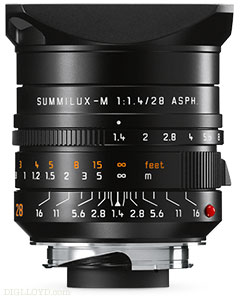EXCERPT page containing first few paragraphs. 2024-04-24 13:49:01
UA_SEARCH_BOT_compatible_botmozilla/5.0 applewebkit/537.36 (khtml, like gecko; compatible; claudebot/1.0; +claudebot@anthropic.com) @ 3.135.183.187
For full access, subscribe here. Or click title to login. ![]()
Secondary Longitudinal Chromatic Aberration (M240)
Secondary longitudinal chromatic aberration (SLOCA) can be a distracting factor with any lens, generating background blurs with a magenta core and green surround. These color blurs pollute the real color, introducing colors that do not exist in the scene. SLOCA always improves with stopping down for depth of field, because the color blurs are in essence differential defocus by color.
When choosing a lens, a highly corrected lens like the Leica 28mm f/1.4 Summilux-M ASPH can excel in many areas, but a high level of correction can reveal inadequate correction for secondary color by removing diluting aberrations which would otherwise dilute the color (desaturate it). The only fast lenses on the market as of late 2015 that really control SLOCA well are the Zeiss Otus designs.
Article continues for subscribers...
Diglloyd Guide to Leica is by yearly subscription. Subscribe now for about 25 cents a day ($90/year).
BEST DEAL: get full access to ALL 8 PUBLICATIONS for about 75 cents a day!
Diglloyd Guide to LEICA contains in-depth coverage of Leica M system cameras and lenses, with additional coverage of Leica M Monochrom, Leica Q.
Special emphasis is placed on Leica M lenses and certain Zeiss ZM lenses.
- Make better images by learning how to get the best results right away.
- Save money by choosing the right lens for your needs the first time, particularly the Summilux/Summicron/Elmarit choice and/or Zeiss ZM.
- Make better images, a sort of “cheat sheet” saving yourself months or years of ad-hoc learning. Processing parameters are discussed and shown.
- Jaw-dropping image quality found nowhere else utilizing Retina-grade images up to full camera resolution, plus large crops [past 2 years or so].
- Real world examples with insights found nowhere else. Make sharper images just by understanding lens behavior you won’t read about elsewhere.
- Aperture series from wide open through stopped down, showing the full range of lens performance and bokeh.
- Optical quality analysis of field curvature, focus shift, sharpness, flare, distortion, and performance in the field.
Want a preview? Click on any page below to see an excerpt as well as extensive blog coverage, for example on Leica.

LEICA M (Typ 240) + Summilux-M 1:1.4/28 ASPH @ 28mm
[low-res image for bot]



